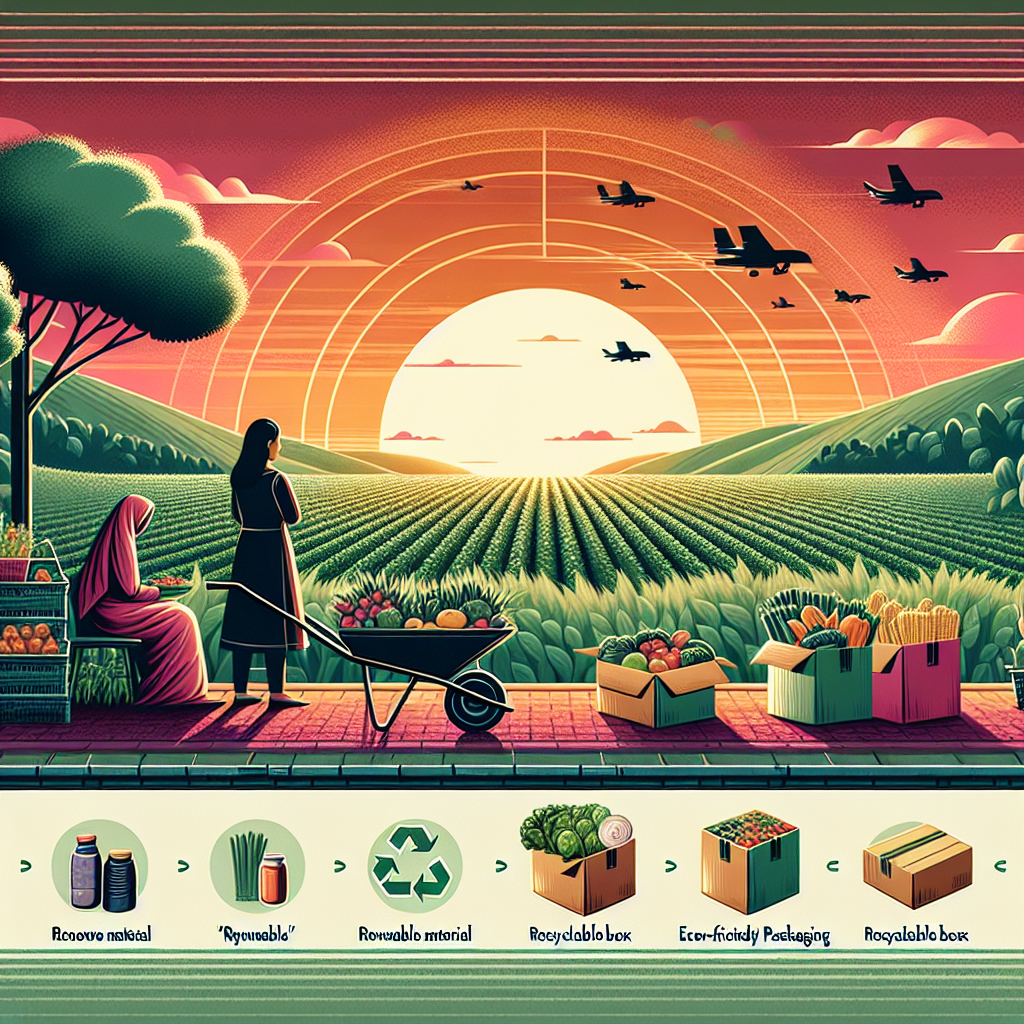In a world that increasingly prioritizes sustainability, the food industry is responding with innovative solutions to reduce waste and promote eco-conscious practices. One of the most crucial aspects of this transformation lies in the packaging used for meal delivery services. From farm to fork, eco-friendly packaging not only preserves the integrity of our meals but also helps to safeguard our planet. In this article, we will explore the importance of eco-friendly packaging in meal delivery, highlighting its benefits, innovations, and the future of sustainable dining.
Understanding Eco-Friendly Packaging
Eco-friendly packaging refers to materials that are biodegradable, recyclable, or compostable, contributing to a minimized environmental footprint. Unlike traditional packaging materials, which often involve plastic and other non-renewable resources, eco-friendly options are designed to reduce waste and support a healthier planet. This shift is particularly relevant in meal delivery services, which have become a significant part of our dining routines.
The Environmental Impact of Meal Delivery
The rise of meal delivery services has been a game-changer for busy individuals and families seeking convenience. However, with convenience comes the responsibility to mitigate the environmental impact associated with food packaging. According to a report by the Environmental Protection Agency (EPA), packaging accounts for nearly 30% of the waste generated in the United States. Consequently, transitioning to eco-friendly solutions is essential in addressing this alarming statistic.
Benefits of Eco-Friendly Packaging in Meal Delivery
1. Reducing Waste
One of the most compelling reasons to adopt eco-friendly packaging is its ability to significantly reduce waste. Traditional plastic packaging can take hundreds of years to decompose, while biodegradable materials break down more quickly, returning nutrients to the soil. By choosing compostable or recyclable materials, meal delivery services can help minimize landfill contributions and foster a circular economy.
2. Preserving Food Quality
Eco-friendly packaging doesn’t just help the environment; it also plays a crucial role in preserving food quality. Many sustainable packaging options, such as plant-based materials, are designed to maintain freshness while being gentle on the planet. Their ability to provide an airtight seal ensures that meals arrive in pristine condition, enhancing the dining experience.
3. Building Brand Loyalty
Consumers today are more environmentally conscious than ever. By opting for eco-friendly packaging, meal delivery services can resonate with this growing demographic, fostering brand loyalty and trust. Companies that prioritize sustainability often see increased customer satisfaction and positive word-of-mouth marketing, ultimately boosting their bottom line.
Innovations in Eco-Friendly Packaging
Biodegradable and Compostable Materials
Innovations in biodegradable and compostable materials are paving the way for a more sustainable future. Products made from cornstarch, sugarcane, and other organic materials are gaining popularity in meal packaging. These materials not only minimize environmental impact but also provide similar functionality to traditional plastics.
Edible Packaging
Imagine a future where you can eat your meal’s packaging after finishing your meal! While this concept may seem like science fiction, edible packaging is becoming a reality. Made from natural ingredients like seaweed or rice paper, edible packaging is an exciting development in the quest for sustainable meal delivery.
Smart Packaging Technology
Smart packaging technology, which incorporates digital labels or indicators, is revolutionizing the industry. Not only can these labels provide information on freshness, but they can also include instructions for recycling or composting. This innovation encourages consumers to dispose of packaging responsibly, promoting a more sustainable lifecycle.
The Future of Meal Delivery and Eco-Friendly Packaging
As we continue to advance in sustainability practices, the future of meal delivery hinges on the adoption of eco-friendly packaging solutions. Companies that invest in innovative materials and technologies are not only contributing to environmental wellness but also setting themselves apart in a crowded market.
Choosing Wisely: What Consumers Can Do
Consumers play a pivotal role in this transition. By actively supporting meal delivery services that prioritize eco-friendly packaging, individuals can send a powerful message to the industry. Look for certifications, such as compostability or recyclability, on packaging, and consider participating in initiatives that promote sustainable practices within your community.
Conclusion: A Collective Effort for a Sustainable Future
From farm to fork, eco-friendly packaging is transforming the landscape of meal delivery services. With its myriad benefits, from reducing waste to enhancing food quality, sustainable packaging is more than just a trend—it’s a necessity. As we move forward, a collective effort from consumers, companies, and policymakers will be crucial in ensuring that our meals are served with a side of responsibility. By prioritizing eco-friendly packaging, we can all play a part in preserving our planet for future generations—one delicious meal at a time.


